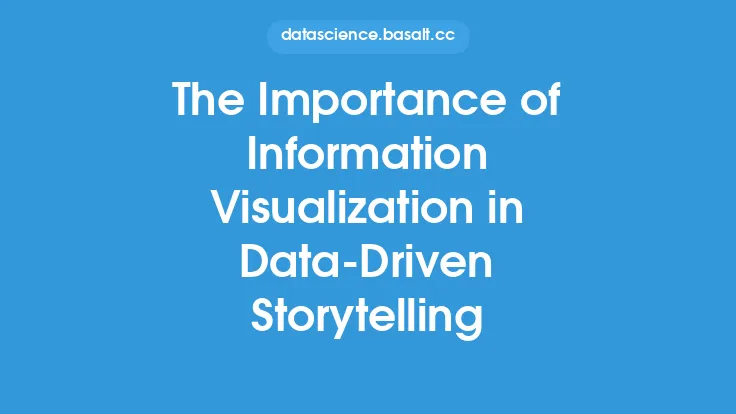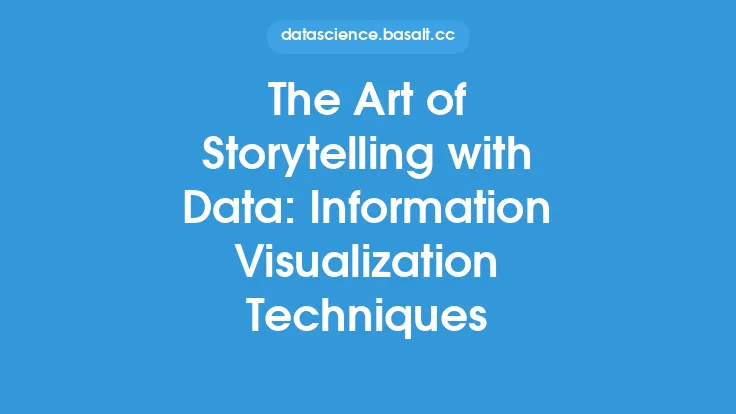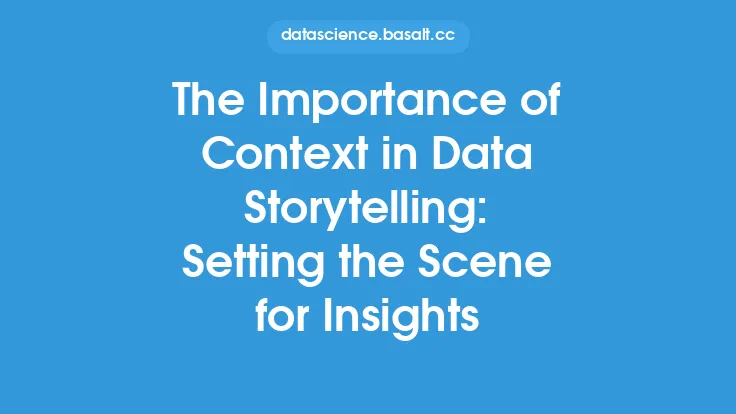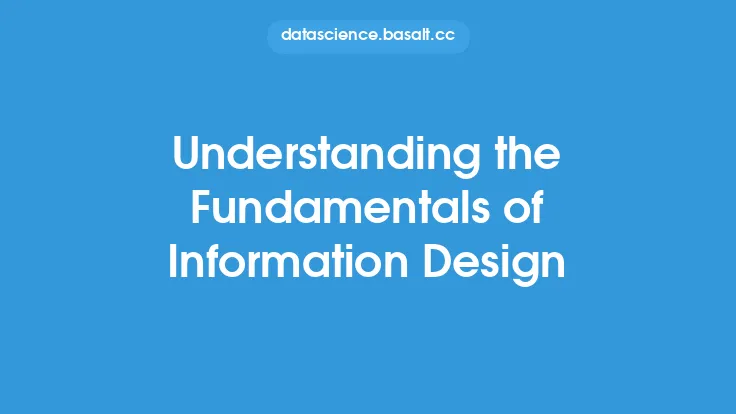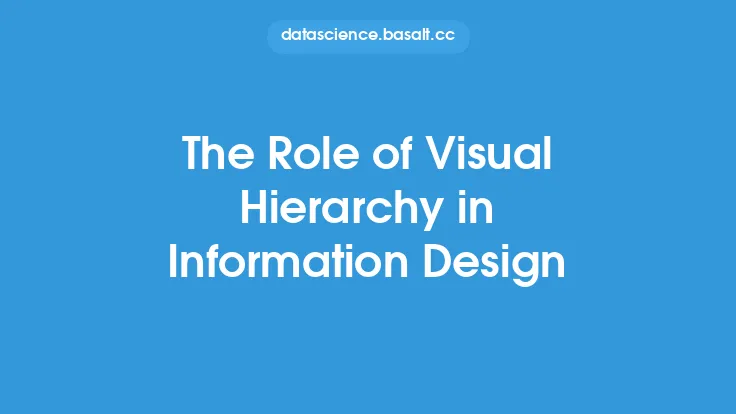Storytelling has been an integral part of human communication since the dawn of time, serving as a powerful tool for conveying emotions, ideas, and experiences. In the realm of information design, storytelling plays a vital role in presenting complex data in a clear, concise, and engaging manner. By leveraging the art of storytelling, information designers can create compelling narratives that capture the audience's attention, facilitate understanding, and drive decision-making.
Introduction to Storytelling in Information Design
Information design is a field that focuses on the presentation and communication of information in a way that is easy to understand and navigate. It involves the use of various visual and interactive elements, such as charts, graphs, and diagrams, to convey complex data and facilitate insight discovery. Storytelling in information design is the process of using narrative techniques to present data in a way that is both informative and engaging. This approach helps to create a connection between the audience and the data, making it more relatable and memorable.
The Benefits of Storytelling in Information Design
The incorporation of storytelling in information design offers numerous benefits, including improved comprehension, increased engagement, and enhanced retention. By presenting data in a narrative format, information designers can help the audience to better understand the context and significance of the information, making it more likely to be remembered and acted upon. Additionally, storytelling can help to create an emotional connection with the audience, making the data more relatable and personal. This, in turn, can lead to increased motivation and a greater willingness to take action based on the insights presented.
Key Elements of Storytelling in Information Design
Effective storytelling in information design involves several key elements, including a clear narrative structure, engaging visuals, and interactive elements. A clear narrative structure provides a logical flow of information, guiding the audience through the story and helping to build a cohesive understanding of the data. Engaging visuals, such as images, charts, and graphs, help to illustrate key points and make the data more accessible and engaging. Interactive elements, such as filters, drill-down capabilities, and animations, enable the audience to explore the data in more detail, creating a more immersive and engaging experience.
The Role of Data Visualization in Storytelling
Data visualization plays a critical role in storytelling, as it provides a powerful means of communicating complex data in a clear and concise manner. By using a variety of visualization techniques, such as bar charts, line graphs, and scatter plots, information designers can help to illustrate key trends, patterns, and insights in the data. Effective data visualization should be intuitive, interactive, and visually appealing, making it easy for the audience to understand and engage with the data. Additionally, data visualization should be used in conjunction with other narrative elements, such as text and images, to create a cohesive and compelling story.
Best Practices for Storytelling in Information Design
To create effective stories in information design, several best practices should be followed. First, it is essential to know the audience and tailor the story to their needs and interests. This involves understanding their level of familiarity with the data, their goals and objectives, and their preferred means of communication. Second, the story should be focused and concise, avoiding unnecessary complexity and detail. Third, the use of interactive elements and engaging visuals can help to create a more immersive and engaging experience. Finally, the story should be regularly updated and refined, incorporating new data and insights to keep the audience engaged and informed.
Technical Considerations for Storytelling in Information Design
From a technical perspective, storytelling in information design involves several key considerations, including data preparation, visualization tools, and interactive technologies. Data preparation involves the process of cleaning, transforming, and formatting the data for use in the story. This can be a time-consuming and complex process, requiring specialized skills and expertise. Visualization tools, such as Tableau, Power BI, and D3.js, provide a range of features and functionalities for creating interactive and dynamic visualizations. Interactive technologies, such as HTML, CSS, and JavaScript, enable the creation of immersive and engaging experiences, including animations, transitions, and responsive design.
Conclusion
In conclusion, storytelling is a powerful tool in information design, enabling the presentation of complex data in a clear, concise, and engaging manner. By leveraging the art of storytelling, information designers can create compelling narratives that capture the audience's attention, facilitate understanding, and drive decision-making. Effective storytelling in information design involves several key elements, including a clear narrative structure, engaging visuals, and interactive elements. By following best practices and considering technical requirements, information designers can create stories that are both informative and engaging, providing valuable insights and driving business success.
